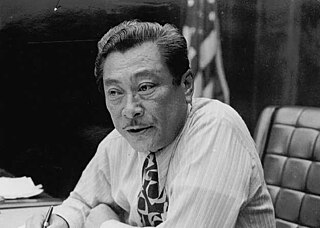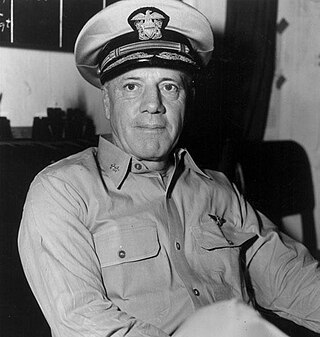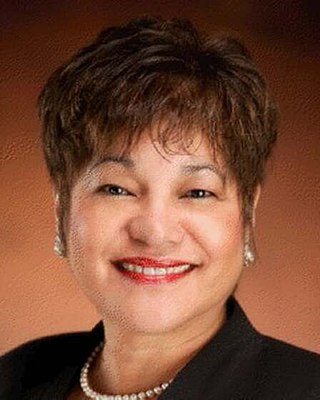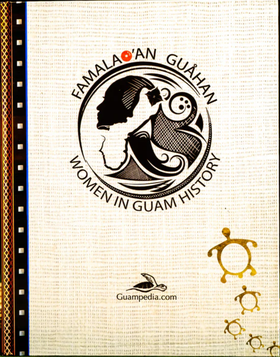Related Research Articles

Hagåtña, formerly Agana or Agaña, is a coastal village and the capital of the United States territory of Guam. From the 18th through mid-20th century, it was Guam's population center, but today, it is the second smallest of the island's 19 villages in both area and population. However, it remains one of the island's major commercial districts in addition to being the seat of government.

Chamorro is an Austronesian language spoken by about 58,000 people, numbering about 25,800 on Guam and about 32,200 in the Northern Mariana Islands and elsewhere. It is the historic native language of the Chamorro people, who are indigenous to the Mariana Islands, although it is less commonly spoken today than in the past. Chamorro has three distinct dialects: Guamanian, Rotanese, and that in the other Northern Mariana Islands (NMI).

The Chamorro people are the Indigenous people of the Mariana Islands, politically divided between the United States territory of Guam and the encompassing Commonwealth of the Northern Mariana Islands in Micronesia, a commonwealth of the US. Today, significant Chamorro populations also exist in several U.S. states, including Hawaii, California, Washington, Texas, Tennessee, Oregon, and Nevada, all of which together are designated as Pacific Islander Americans according to the U.S. Census. According to the 2000 Census, about 64,590 people of Chamorro ancestry live in Guam and another 19,000 live in the Northern Marianas.

Carlos Garcia Camacho was an American politician and dentist noted for being the first elected Governor of Guam, serving in the position from 1971 to 1975. A member of the Republican Party, he had previously served as the last appointed Governor of Guam from 1969 to 1971 under President Richard Nixon. Prior to this, he was a member of the Guam Legislature.

The Republican Party of Guam, commonly referred to as Guam GOP, is a political party in Guam affiliated with the United States Republican Party.

The Democratic Party of Guam is a political party in Guam affiliated with the U.S. Democratic Party. Its origins lie in the Popular Party, which was the only political party on Guam until 1956.

The United States territory of Guam is divided into nineteen municipalities, called villages. Each village is governed by an elected mayor. Village populations range in size from under 1,000 to over 40,000. In the 2020 census, the total population of Guam was 153,836. Each municipality, known as an "election district" by the United States Census Bureau, is counted as a county equivalent by the Census Bureau for statistical purposes.

SMS Cormoran or SMS Cormoran II was a German armed merchant raider that was originally a German-built Russian merchant vessel named Ryazan. The ship was active in the Pacific Ocean during World War I. Built in 1909, she was captured by the German light cruiser SMS Emden on 4 August 1914 and converted into a raider at the German colony Kiautschou. She was forced to seek port at Apra Harbor on the US territory of Guam on 10 December 1914. The United States, then declared neutral in the war, refused to supply provisions sufficient for Cormoran to make a German port. After the US declaration of war on April 6, 1917, the Naval Governor of Guam informed Cormoran that she would be seized as a hostile combatant, prompting her crew to scuttle her.

Charles Alan Pownall was a vice admiral in the United States Navy and Governor of Guam. He was the third military Governor and first naval Governor of Guam following the United States recapture of the island from the Japanese. After conflict with the Guam Congress in 1948, Pownall replaced many Congressmen with his own appointments, whom the Guamanians refused to recognize. The ensuing protest persuaded President Truman to transfer control of the island away from the Navy. As a consequence, Charles Pownall was the last military governor of Guam.
Antonio "Tony" Manibusan Palomo was a Guamanian politician, historian, journalist, columnist, and academic. Palomo served as a senator in the Legislature of Guam and the director of the Guam Museum from December 1995 to June 2007.

The Guam Museum, formally the Senator Antonio M. Palomo Guam Museum & Chamorro Educational Facility, is a museum focusing on the history of Guam, a U.S. territory in Micronesia. A permanent building to house the museum's collection opened in Hagåtña on November 4, 2016. The Guam Museum had been housed in temporary locations since World War II.

Judith Teresita Perez Won Pat, also known as Judi Won Pat, is a Guamanian politician, teacher, and school administrator who served as the speaker of the Guam Legislature from 2009 to 2017. A member of the Democratic Party of Guam, served as the senator of the Guam Legislature from 1994 to 2003 and again from 2005 to 2017. Won Pat was the former sitting chairperson of the Committee on Education, Public Library and Women’s Affairs in the 32nd Guam Legislature.

Lourdes Aflague "Lou" Leon Guerrero is an American politician and former nurse who has served as the 9th governor of Guam since 2019. A member of the Democratic Party, Guerrero is the first woman to serve in the position. Leon Guerrero had served in the Guam Legislature from 1995 to 1999 and again from 2001 to 2007. From 2007 to 2017, Leon Guerrero was president and CEO of the Bank of Guam.
Frank Flores Blas Sr. was a Guamanian politician, businessman and member of the Republican Party of Guam. Blas served as the 5th Lieutenant Governor of Guam from January 5, 1987 until January 2, 1995 for two consecutive terms under Governor Joseph Franklin Ada.
Amanda Lee Shelton is a Guamanian politician who currently serves as a senator in the Guam Legislature. Shelton was chosen by her colleagues to serve as Legislative Secretary and Majority Whip and Chairperson of the Committee on Higher Education and the Advancement of Women, Youth, and Senior Citizens.

Adelup Point is limestone promontory in Hagåtña, Guam that extends into the Philippine Sea and separates Asan Bay from Hagåtña Bay. It has been the site of the Ricardo J. Bordallo Governor's Complex since 1990. Adelup is therefore a metonym for the Office of the Governor of Guam.

Latte Stone Park, officially Senator Angel Leon Guerrero Santos Latte Stone Memorial Park, is an urban park in Hagåtña, Guam. Established in the 1950s and operated by the Guam Department of Parks and Recreation, it is best known for its set of eight historical latte stones, which were transferred from their original site in Fena. The Park is located along the cliffline below the Governor's residence in Agana Heights and south of the Plaza de España. It is often visited by sightseers visiting central Hagåtña. The park also includes the entrances to two sets of caves that were constructed during the Japanese occupation (1941–1944) by forced laborers and that were listed in the National Register of Historic Places in 1991 as the Agana/Hagåtña Cliffline Fortifications.

Famalao’an Guåhan: Women In Guam History is a 2019 publication highlighting the lives of 28 notable women who contributed to Guam's culture. The book was the second printed publication from Guampedia, a non-profit associated with the University of Guam.
Agueda Johnston was a Chamorro educator, known as the "Mother of Guam's Education". She was instrumental for Guam's Liberation Day to be recognized by the authorities of the island as a festive holiday.
The U.S. Naval Cemetery on Guam is located at Marine Corps Drive in East Hagåtña. Following the June 1898 capture of Guam, Article II of the December 10, 1898 Treaty of Paris transferred Guam, Puerto Rico and the Philippines to the United States control on December 23.
References
- 1 2 3 "Ignacia Bordallo Butler – Guampedia". www.guampedia.com. 2009-09-29. Retrieved 2023-08-29.
- ↑ Lloyd, Bruce (2017-07-03). "Butler's Inc., venerable Guam business, prepares for its 103rd year of operation. What is its future". pactimes. Retrieved 2023-08-29.
- ↑ Baza, Isa (2015). "Butler's honored as Guam's oldest family businesses". Kuam News. Retrieved 2023-08-29.
- ↑ Staff, Daily Post (2019-03-21). "'Women in Guam History' exhibit open in Hagåtña". The Guam Daily Post. Retrieved 2023-08-29.
- ↑ Sablan, Jerick (2019-03-06). "Guampedia publishes Famalao'an Guahan: Women in Guam History". guampdn.com. Retrieved 2023-08-29.
This article needs additional or more specific categories .(June 2024) |